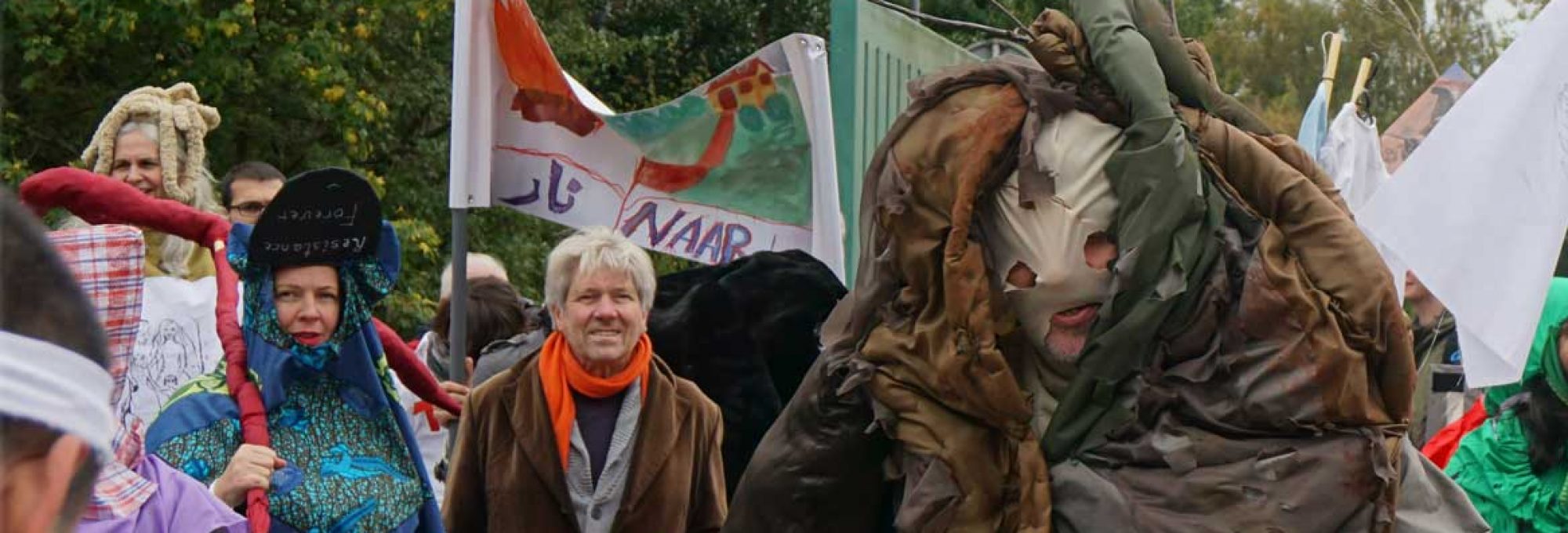This winter an exhibition «Resistance Strategies. The strange don’t surrender» by Gluklya (Natalya Pershinina-Yakimanskaya) took place in the Saint Petersburg branch of the State Center for Contemporary Art. Gluklya answered questions of Aroundart.
Olga Zhitlina: In the manifesto of the FFC (Factory of Found Clothes) you and Tzaplya write about sentimentality, but about a non-Hollywood type of it. How can an artist re-appropriate feelings from Hollywood?
Gluklya: We just wanted to work with feelings, and that’s all. The statement was actually written while polemicizing with those artists, who are afraid of working with feelings, because everything is like appropriated by this dirty capitalist world. But if we follow this chaste way, it seems like we’ll fall into hermeticity. Let’s choose our own language (and aesthetics is a language), and let people learn this new language! And at this point I have a question: “How will they actually learn it”? Maybe, we should still leave some codes that will allow people to recognize themselves if they conceive a wish to share the artist’s convictions?
O: It seems to me that in the exhibition «Resistance Strategies» you use the aesthetics of the absurd, almost trash. However, the people you’re filming preserve their human dignity. How do you manage to do it?
G: Thanks a lot! I guess I just truly empathize with them. I never rank myself higher than others. I try to become the people whom I work with for some time, so that I can get the feel of them, understand what they sense and how they live. The veterans, just like other people, wanted to find themselves on the territory of performance, because it’s interesting to come to be in a space that isn’t yours, that is different. And this proves that all of them are creative living people, able to transform, and not some “stalactites” that need to be put on the shelf and left alone, because they are so old.
O: During the opening three old ladies – the veterans – sang war songs. Weren’t you afraid that they would appear ridiculous and silly?
G: I got rid of this fear after several projects, when people thanked us for what we did. And – I have to say – we always move far beyond the limits of political correctness. Here we need to remember about the sense of humor, which is a very effective way of dealing with reality. Also, I think that the system has greatly succeeded in surrounding politics with a halo of inviolability, meaning that yes, we should respect the Other, but this doesn’t imply that under this mask we should, for example, artificially separate people from each other, so that we can control them. I seriously believe that new units of retirees and students can emerge and strengthen the disrupted social tissue.
O: When you talk about the «weak», what should it refer to? To the «oppressed» of Marx, who can’t represent themselves, or to the Christian “orphans and cripples”, mainly needed for the moral improvement of the subject helping them? Or somebody else? Why do you resort to this category, and what do you think is the effect of constructing the division based on such qualities as weakness and strength?
G: I mean the socially excluded – those, who are made weak by the authorities. This division is necessary to show that we want not to adorn the powers, but to help people, who found themselves in the situation of oppression, so that there will be no doubt about which side we are on.
O: Theorists (for example, Gayatri Spivak) came to the conclusion that the oppressed can’t speak for themselves, that they need to be represented by an intellectual, or an artist. But in your works you not only represent the “oppressed”, but also represent one group of the “oppressed” with the help of another group. For example, you try to put the speech of the retired into the mouth of students, the young; and the unemployed are represented by ballet dancers and vice versa. What’s the sense of this double transmission?
G: I think Foucault said that, and Spivak – the opposite, but it’s easy to check it. I do this, because I think that the socially excluded need to unite. In this way they will become stronger and will be able to resist the system. Because one of the things that makes them weak is the fact that they have no place to meet/unite, except for the territories organized by the authorities, and we can provide them with such a platform on the territory of the institutional art. We now deal with building new horizontal connections, organizing the situation.
PHOTOS – ART AMSTERDAM, INSTALLATION PENSIONE’S RESIST
